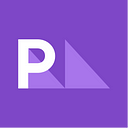Learn How to Work Remote Better
I love to test and try out new softwares. Throughout my career I have discovered some favorite softwares, and I’m always testing new tools. Since a bunch of people working from home due to the pandemic we’re living in right now, in this post I’m going to share a compilation of great tools for remote teams.
I’m accustomed to working from home, and the tools I use already account for remote work since my team is located globally. This is an important moment we’re living in, it’s scary. There’s a lot going on, and we need to make sure we’re mentally healthy while we adjust to the new reality for the next weeks or months.
One thing I can guarantee you, the tools you and your team choose to use right now can make the difference in your success working remotely. I strongly encourage you to test different tools and read reviews before adopting them. I’m sharing a WFH101 series, and more articles with tips are in the oven so stay tuned!
▪️ Cloud File Storage
Cloud storage may be the most important tool during this work from home period. I mainly use Google Cloud, and this is my favorite tool so far. I’ve also tried Dropbox before, and they have a great tool, as well as Box too.
Prices:
- Google Cloud: Business Plan $12 (unlimited cloud storage or 1TB per user if fewer than 5 users). Includes access to Gmail, Calendar, Drive, Hangouts Chat, Hangouts Meet, Docs, Sheets, Slides, Forms, Sites, Keep, Currents, Apps Script, and Cloud Search.
- Dropbox: Standard $12.50 (per user/month, starting at 3 users with 5TB storage).
- Box: Business Plan $15 (per user/month, minimum 3 users with unlimited storage).
▪️ Team Communication
Life without Slack was definitely harder. For team communication I recommend Slack for the most part. I also use Google Hangouts, but Slack is my favorite so far. Fortunately, Slack is free for smaller teams. If your company uses Google Cloud, you will automatically have access to the Google Suite, including Hangouts. Don’t forget to check my article with my favorite Slack integrations.
Prices:
- Slack: Free for small teams trying out Slack for an unlimited period of time.
- Google Cloud: Business Plan $12 (unlimited cloud storage or 1TB per user if fewer than 5 users). Includes access to Gmail, Calendar, Drive, Hangouts Chat, Hangouts Meet, Docs, Sheets, Slides, Forms, Sites, Keep, Currents, Apps Script, and Cloud Search.
▪️ Video Conferences
Using video conference apps during this time is a little bit tricky. The internet in general can be a little unstable. My favorite apps for VC communications are Google Hangouts (again) and Zoom. I love how stable they are (for the most part), and they offer an option to record the phone call. Zoom has something super cool, which is the option to make drawings and share notes virtually with the team similar to what Jamboard does, but of course less high end.
Prices:
- Zoom: Business plan for small & medium businesses $19.99 (per mo/host with a minimum of 10 hosts).
- Google Cloud: Business Plan $12 (unlimited cloud storage or 1TB per user if fewer than 5 users). Includes access to Gmail, Calendar, Drive, Hangouts Chat, Hangouts Meet, Docs, Sheets, Slides, Forms, Sites, Keep, Currents, Apps Script, and Cloud Search.
▪️ Design Collaboration
Remember when we used to love Sketch, and we thought, “this is it!” That was until Figma appeared and changed everything. My only recommendation for a design tool is Figma because of its versatility. You and your team can create designs on it (of course), prototypes, wireframes, and since it’s a web-based tool, you won’t need to worry about version control anymore. Fantastic!
Prices:
- Figma: Organization $45 (per editor/month with unlimited projects).
▪️ Flowchart and Diagramming
It’s been awhile since I used LucidChart to create flowcharts and diagrams. It’s my favorite tool so far. I love it because it’s a web-based tool, and you can even use it on your phone/tablet. It also offers collaboration between teams in real time. If you used another flowchart and diagramming app before like Visio, OmniGraffle 6, and OmniGraffle 6 Pro, you can import the files to LucidChart.
Prices:
- LucidChart: Free (single user with introductory shape libraries and 100 basic templates).
▪️ Timeline
Smartsheet is an excellent web-based tool to create timelines, project plans, kanban boards, and even dashboards. I’ve used it for at least 3 years, and I’m always so impressed with the power of this tool. They also offer trainings (some for free) that will teach you to make your project plans and dashboards even more powerful.
Price:
- Smartsheet: Business $25 (per user per month).
▪️ Collaborative Documents
I know, I’m talking about Google Cloud tools over and over. I absolutely love the Google Suite. The tools I’ve used the most for team collaboration are Google Docs, Sheets, Slides, and Forms. It’s so worth the subscription fee. If you haven’t tried it yet, or not much, consider switching to Google Suite soon.
Prices:
- Google Cloud: Business Plan $12 (unlimited cloud storage or 1TB per user if fewer than 5 users). Includes access to Gmail, Calendar, Drive, Hangouts Chat, Hangouts Meet, Docs, Sheets, Slides, Forms, Sites, Keep, Currents, Apps Script, and Cloud Search.
▪️ Tracking and Kanban
I’ve used Trello for a long time, I love how simple and easy it is to use. The Kanban boards look really beautiful and organized. They have a bunch of interesting templates like weekly planning, kanban boards, research projects, and OKRs among others. Jira is a little different from Trello visually and also technically. You can also create Kanban and Scrum boards, roadmaps, Agile reporting, and bug tracking.
Prices:
- Trello: Business Class $9.99 (per user per month).
- Jira: Standard $7 (per user/month starting price with up to 5,000 users).
▪️ Project Management
Two great tools for project management are Asana and Wrike. Asana is really good for creating workloads, monitoring progress and status of projects, and submitting and managing work requests. They also have a timeline option, and you can build automation streamlining processes. Wrike works similarly with a different UI and features. I like the work management, dashboard, live editor, version control, time and budget tracking features, and my favorites are the Gantt chart option and team reporting.
Prices:
- Asana: Business $24.99 (per user/month).
- Wrike: Business $24.80 (per user/month with 200–500 users).
▪️ Scheduler
If you use Google Calendar you’re in a good place already, but when you need to schedule meetings outside of your team organization, things start to get trickier. The tool I like to use in situations like that is Calendly. It integrates with your Google Calendar, and then you’ll be able to schedule meetings without back and forth emails confirming the best timing.
Prices:
- Calendly: Pro $12 (per user/month with 6 calendars/users).
- Google Cloud: Business Plan $12 (Unlimited cloud storage or 1TB per user if fewer than 5 users). Includes access to Gmail, Calendar, Drive, Hangouts Chat, Hangouts Meet, Docs, Sheets, Slides, Forms, Sites, Keep, Currents, Apps Script, and Cloud Search.
▪️ Ticketing System
Zendesk helps you to track, prioritize, and solve customer support tickets in a seamless way. They have different packages and depending on the one you choose, you can get more or less personalized features. Service Cloud is also a customer service software and support application. My favorite part of Service Cloud is its integration with other Salesforce tools you might be using, which makes this tool even more powerful, allowing you to get sales information through the same platform.
Prices:
- Service Cloud: Enterprise $150 (per user/month).
- Zendesk: Starts at $5 (as an agent).
▪️ UX Research
I love the Enjoy HQ user interface, everything is so beautiful. Their tool will help you to centralize and organize your user research insights before sharing it with the broader team. Think about a research repository, this is it. Another great tool for remote team collaboration is Validately, which is a tool to talk with users during the user research process. I highly encourage you to check out their webinars to learn more about the Validately tool.
Prices:
- Validately: Basic $299 (per month/user with 15 studies per year).
- Enjoy HQ: Mars $25 (per month/user with unlimited research projects).
▪️ Virtual Whiteboarding
I think the Jamboard is an amazing invention. When I was doing Design Sprints especially or any brainstorming sessions, I always missed something with this functionality. I know it’s a big investment to buy a whiteboard, and most people don’t know there are iOS, Android, and Google Chrome versions of whiteboards, where you don’t need to make any investment while sketching your ideas in a whiteboard-style. Another robust tool for whiteboarding is Miro. It’s great for ideation and brainstorming, and offers a different set of widgets, templates, and toolkits for user story, customer journey maps, and sprint planning.
Prices:
- Miro: Business $16 (per user/month billed for teams sized 20+).
- Jamboard: The app is for free, they have a Google Chrome Extension, Android and iOS version.
▪️ Video Review and Collaboration
Frame.io is a powerful cloud-based video review and collaboration tool that can help you share your video and accelerate the approval process with team members and stakeholders. They have integrations with Premiere Pro, Final Cut Pro X, After Effects, DaVince Resolve, and Avid Media Composer.
Prices:
- Frame.io: Team $49 (per month starting with 3 seats).
▪️ Remote Pair Programming
A friend of mine (thanks Juliana Almeida ❤) recommended the Tuple app. I know a bunch of people are doing programming pairing via Hangouts, and it’s not the best tool for that, so I think Tuple can be an amazing solution. They promise a crazy-low CPU usage and seamless control for two, which makes it definitely worth testing at least the 7-day trial.
Prices:
- Tuple: Engineering Teams $25 (per user/ month with unlimited pairing sessions).
I hope you’re doing well and liked the post. This is a subject I love to write about, and I would love to get your thoughts! What are your favorite tools to work remotely nowadays? Stay safe and don’t forget to be kind. ❤
Additional Resources
👋 Feel Free to Clap and Share your Thoughts!
Find more at our LinkedIn, Instagram, and Twitter. Check our podcast. Follow our LinkedIn page and Newsletter!
Disclosure: At PM101, we strive to provide our readers with valuable and honest information on Product and Program Management. As a way to support the blog and continue providing valuable content, some blog posts may contain affiliate links or promotional content. By clicking on these links and making a purchase, the writer may receive a small commission at no additional cost to you. This commission helps to keep the blog running and allows the writer to continue providing valuable content and increasing her coffee and kombucha consumption. Rest assured, we will always provide honest and informative content and use affiliate links and promotional content only as a means to generate revenue to support the blog.

